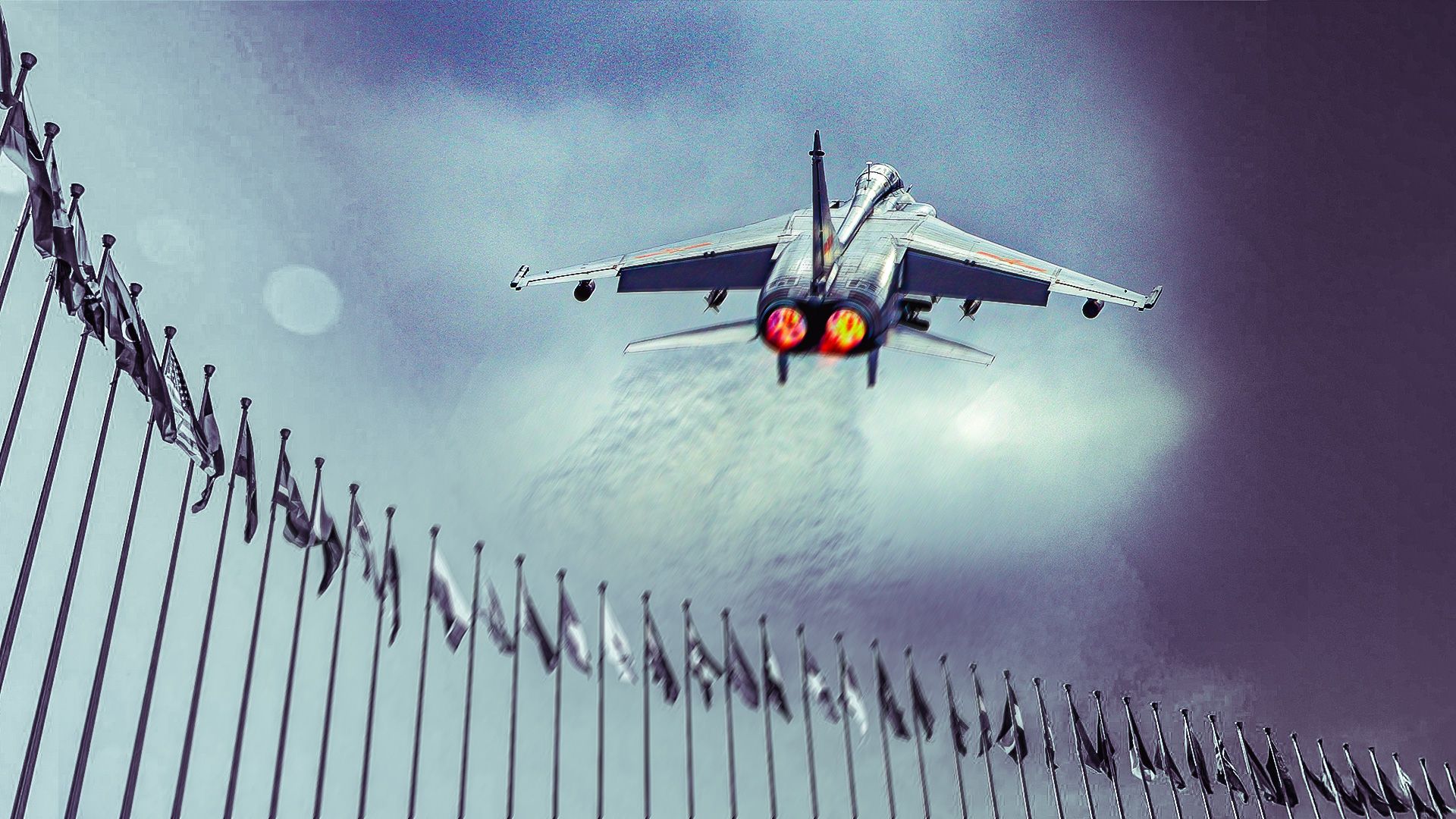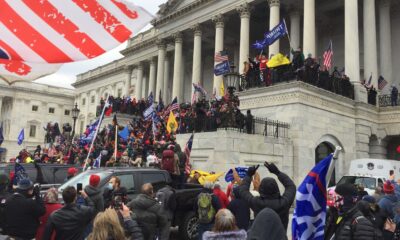Business
China Seizes Market Share in Fighter Jet Exports Amid Declining Russian Sales

China is strategically expanding its fighter jet exports as Russia’s sales face significant decline due to geopolitical tensions and economic sanctions. Over the past decade, China has positioned itself as a viable alternative for countries seeking advanced military aircraft, especially as Russia’s market presence wanes. This shift marks a pivotal change in the global arms market, highlighting China’s growing influence in military aviation.
Historical Context of Fighter Jet Exports
Historically, China’s fighter jet exports catered primarily to nations with strained relations with the West. During the Cold War, the Sino-Soviet split allowed China to emerge as a supplier for anti-Western countries, particularly those with limited options. Early on, China primarily exported basic models like the Chengdu J-7, a derivative of the Soviet MiG-21, which were considered inferior to their Western counterparts.
However, this landscape is evolving. Recent models such as the J-10C Vigorous Dragon and the forthcoming J-35, a fifth-generation fighter jet, present advanced capabilities that appeal to various nations looking to diversify their military aircraft options.
Current Operators of Chinese Fighter Jets
Numerous countries continue to operate older Chinese fighter jets, often due to budget constraints. The Shenyang F-5, Shenyang J-6, and Chengdu J-7 remain in service in countries such as North Korea, Myanmar, and Pakistan. The F-5, a relic first introduced in 1952, exemplifies the age of many Chinese aircraft still in use.
The Shenyang J-6 is utilized by nations including Myanmar and Sudan, while the J-7 has seen export production extending until 2013, with operators in Africa and South Asia. Many of these nations are not currently acquiring new jets but have established a legacy of operating older Chinese models.
China’s export strategy has heavily focused on African nations in recent years, yet a notable shift is occurring. Countries are increasingly considering Chinese jets, like the J-35, as potential alternatives to Western models.
An important player in this landscape is Pakistan, which has transitioned from reliance on U.S. military aircraft to Chinese options. Pakistan is currently the only export operator of the Chengdu J-10, with approximately 20 units in service and an additional 16 on order. This aircraft is often compared to the U.S. F-16 Fighting Falcon.
The JF-17 Thunder, co-developed with Pakistan, is another significant success. This low-cost multirole fighter, which incorporates Chinese technology, has also found buyers in nations such as Azerbaijan and Nigeria.
Negotiations are ongoing for potential sales of high-end fighters. Egypt has shown interest in the J-10, particularly after the United States restricted its acquisition of advanced aircraft. Similarly, the United Arab Emirates (UAE) is exploring options following a setback in its F-35 negotiations with the U.S.
Challenges and Opportunities in the Fighter Jet Market
Despite the promising outlook for Chinese fighter jet exports, certain challenges persist. Political rivalries hinder potential markets; for example, India remains unlikely to purchase Chinese aircraft due to longstanding tensions. Similarly, Vietnam, wary of China’s intentions, continues to seek alternatives in Russian and U.S. fighter jets.
In the Asia-Pacific region, nations such as South Korea, Japan, and Australia remain firmly aligned with Western military hardware, further complicating China’s ambitions. However, there is potential for growth in countries like Malaysia and Indonesia, which are reportedly considering Chinese fighters as options.
As of July 2025, reports indicate that the J-35 has entered mass production. While no confirmed export orders exist yet, the aircraft’s design suggests it may be well-suited for naval operations as China enhances its carrier fleet.
The United States continues to lead in global combat aircraft exports, with approximately 996 aircraft sold, followed by France and South Korea. China holds a modest position with 57 exports, primarily focusing on lower-tier fighter jets and trainers.
In summary, while China’s fighter jet exports are relatively limited at present, the landscape is shifting. As demand for advanced military aircraft rises and Russia’s capacity to supply dwindles, China may be poised for significant expansion in the coming years. The potential for countries like Iran to engage in negotiations for Chinese jets reflects a broader trend of seeking alternatives to traditional suppliers. The future of Chinese fighter jet exports appears promising, contingent on geopolitical dynamics and technological advancements.
-

 Entertainment3 months ago
Entertainment3 months agoAnn Ming Reflects on ITV’s ‘I Fought the Law’ Drama
-

 Entertainment4 months ago
Entertainment4 months agoKate Garraway Sells £2 Million Home Amid Financial Struggles
-

 Health3 months ago
Health3 months agoKatie Price Faces New Health Concerns After Cancer Symptoms Resurface
-

 Entertainment3 months ago
Entertainment3 months agoCoronation Street’s Carl Webster Faces Trouble with New Affairs
-

 Entertainment2 months ago
Entertainment2 months agoWhere is Tinder Swindler Simon Leviev? Latest Updates Revealed
-

 Entertainment4 months ago
Entertainment4 months agoMarkiplier Addresses AI Controversy During Livestream Response
-

 Science1 month ago
Science1 month agoBrian Cox Addresses Claims of Alien Probe in 3I/ATLAS Discovery
-

 Entertainment4 months ago
Entertainment4 months agoKim Cattrall Posts Cryptic Message After HBO’s Sequel Cancellation
-

 Entertainment2 months ago
Entertainment2 months agoOlivia Attwood Opens Up About Fallout with Former Best Friend
-

 Entertainment3 months ago
Entertainment3 months agoMasterChef Faces Turmoil as Tom Kerridge Withdraws from Hosting Role
-

 Entertainment4 months ago
Entertainment4 months agoSpeculation Surrounds Home and Away as Cast Departures Mount
-

 World2 months ago
World2 months agoCole Palmer’s Mysterious Message to Kobbie Mainoo Sparks Speculation




















